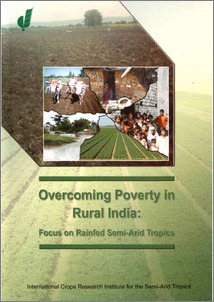Overcoming Poverty in Rural India: Focus on Rainfed Semi-Arid Tropics
Abstract
This study is a comprehensive analysis of the nature, the dynamics and the determinants of poverty in the semi-arid tropics (SAT). It uses the sustainable livelihood framework to identify the underlying determinants of poverty and the pathways in moving out of poverty. Quantitative analysis based on the most recent National Sample Surveys (NSS) of India (1999-2000 round) generated classifications of relevant typologies including agroecological zones, occupational groups, irrigation access and social groups. It shows that poverty in India is concentrated most in the SAT and humid areas. It identifies caste and occupational groups facing highest incidence of poverty. The typologies systematized the establishment of linkages between rural poverty and the semi-arid tropics. The study presents a synthesis of evidence and lessons learnt from the village level studies (VLS) by the International Crops Research Institute for the Semi-Arid Tropics (ICRISAT) and other household level case studies - income and expenditure levels, incidence of poverty and under-nutrition and coping strategies when faced with droughts and other income shocks. The empirical analysis uses both the quantitative and the qualitative data to document the existing and emerging evidences on the spatial and the social dimensions of poverty. The poverty diagnostics and strategic assessment of the issues confronting SAT generated a comprehensive perspective from both the micro and the macro levels, thus deepening our understanding of the multi-dimensional nature of SAT poverty. The study reviews the existing poverty alleviation programs (their merits and demerits and successes and failures) and concludes with a set of recommendations on strategies to increase the contribution of SAT agriculture to poverty reduction

